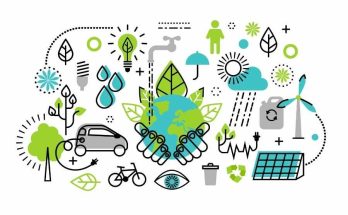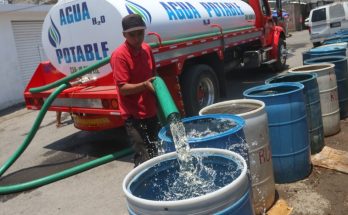By Alejandro Angulo
If we believe climate change and the decline of biodiversity are the only problems, we are wrong. Desertification represents another great threat to survival. There is a clear relationship between change in land use, desertification, and groundwater degradation. A 2013 study by the National Baseline of Degradation and Desertification (Conafor, Semarnat, and UACh, 2013) points out the relation to water resources: “In the case of water resources, the area affected at the national level amounts to 64.8% of the territory (126.9 million ha). Of this area, 72.6 million (37% of the national territory) are affected by a slight level degradation, while moderate, severe, and extreme levels reach 54.4 million hectares (27.8% of the national territory).”
Forty percent of the world’s irrigated land currently depend on groundwater. As a result, groundwater is declining, and millions of irrigation wells have been depleted or are on the brink of doing so. Recent news is that Peña de Bernal had run out of water because the well from which the water was extracted had dried up. According to the Earth Policy Institute, Mexico is one of the countries overexploiting aquifers.
Desertification is a major environmental problem requiring urgent solutions. However, until now, desertification has been considered an aggregate of other variables. Desertification, defined by the UN is “the degradation of land in arid, semi-arid, and dry sub-humid areas resulting from various factors, such as climatic variations and human activities.” This definition is broad and ambiguous and can be represented many ways, none of which is fully convincing. It’s for this reason that the World Atlas of Desertification alternatively proposes a method that it calls “Convergence of Evidence.” It’s a way to see where striking values of certain biophysical variables (aridity, hydric stress, loss of plant cover, etc.) and socioeconomic (demographic density, income level, livestock density, etc.) converge. These factors may indicate processes of land degradation is taking place, and may deprive the territory of its natural productivity. Desertification is fundamentally a problem having to do with poor management of soil and of natural resources.
In the Soil Atlas of Latin America and the Caribbean (European Commission, 2014), Gardi et al. have pointed out that, “Soil has been, in general, a natural resource little attended by both government and society in general, to the extent that the orientation of support programs is directed towards productive purposes such as agriculture, livestock, and forestry. In this way, these programs have not considered, or have only done so superficially, their conservation and the improvement of their properties. Even when actions are carried out for environmental restoration purposes, most of them are focused on the protection or expansion of vegetation rather than the protection of the soil as their main objective.”
In 2015, environmentalist América Vizcaíno declared that, “It is urgent that Querétaro have a soil conservation program. On the one hand, if you lose soil, you lose the ability to produce food or plants that in turn feed livestock or people.” More recently, this year, the Senate of the Republic urged that it be “a priority to reverse the desertification of the land.”
“The subsistence of some two billion people in the world depends on the loss of ecosystems in arid and semi-arid zones, mainly in developing countries. Currently, this loss affects 51 million hectares of land in Mexico, which disrupts [the lives of] 65 million people in the country, with a cost of about 139 million pesos,” according to Blanca C. Ramírez Hernández, head of the Department of Ecology of the University Center of Biological and Agricultural Sciences (CUCBA) of the University of Guadalajara.
In addition, soil without cover emits more carbon dioxide, which contribute to global warming and climate change. Soil with vegetation cover has greater carbon fixation and water attraction, and therefore, greater productivity.
(To be continued)




